In the heart of the Chianti lands, among green hills and postcard landscapes, Siena enchants for the value of its artistic, historical and gastronomic heritage.
Founded by Romans in the second century BC, the city has retained its medieval appearance characterized by narrow and winding streets, squares and towers: it is surrounded by walls in which 8 doors open and is set on three hills from which depart the streets that converge in what is the heart of the city, Piazza del Campo.
With its shell shape divided into 9 segments it is undoubtedly one of the most beautiful squares in the world, universally recognized as the setting of the Palio, the famous horse race that takes place every year in July and August.
Siena is also home to one of the oldest universities in Europe, founded in 1240, and preserves numerous monuments and museums including the Duomo, the Palazzo Pubblico and the National Art Gallery: for its cultural value and landscape has been a UNESCO World Heritage Site since 1995.
In this article you will discover what are the unmissable things to do in and around Siena, a journey that can make you relive atmospheres, images, scents and flavors of the past.
Discover here the Siena pass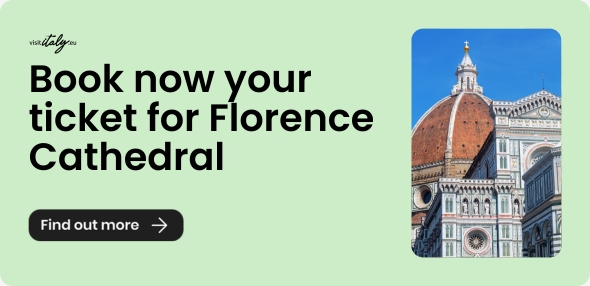
Things to do in Siena: the 10 must-see attractions in the heart of Chianti
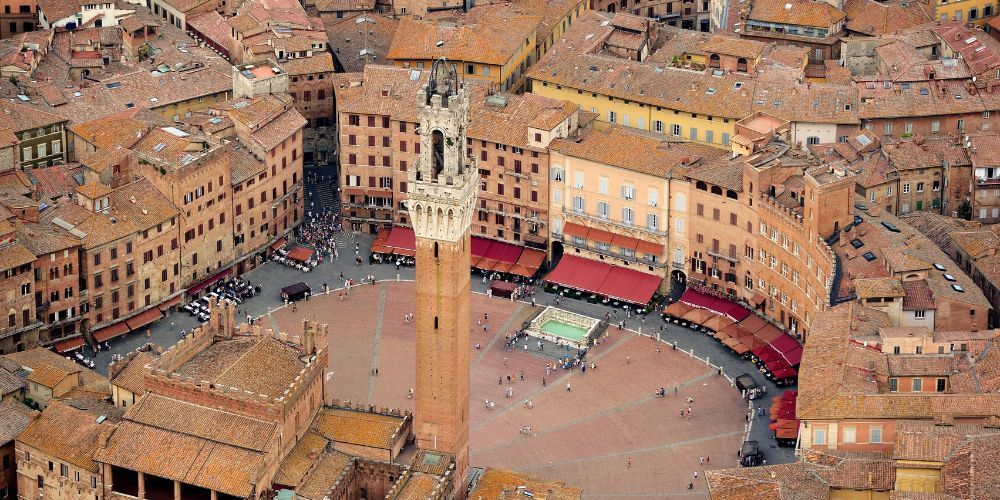
Ph Canva by Ominojarre
Visiting Siena and its surroundings is like going on a journey through time: the heart of Chianti retains glimpses and medieval atmospheres and scents of the past. Whether you get lost in the winding streets of the historic center, among ancient shops and cellars, or in the artistic suggestions of churches, museums and palaces, or among the flavors of traditional dishes, immersed in the green countryside among vineyards and sunflower fields, these lands will conquer you at first glance.
After visiting Siena, its square and the beautiful Gothic cathedral that contains priceless masterpieces, the synagogue, the most important buildings and rich in history and the most beautiful corners of the historic center, choose the city as a privileged starting point to explore the surrounding villages and countryside: breathtaking landscapes, castles, abbeys, vineyards and olive groves will be the setting for your experience.
Let yourself be enchanted by the lands of Chianti and the charming architecture of San Gimignano: visit its rich museums, climb the towers to admire an enchanting view of the hills and enter the daily life of a bourgeois family of the nineteenth century in Campatelli House.
Immerse yourself in the atmosphere of the medieval Brolio castle to taste the wines of the area, or explore the Val d'Orcia vineyards, where Brunello di Montalcino is produced, letting your gaze get lost in the beauty of landscape.
Admire the works of art kept in the Civic and Diocesan Museum of Montalcino and the Renaissance residence of Palazzo Piccolomini in Pienza, losing yourself in the floral geometries of its Italian gardens; Breathe an air of mysticism in the Romanesque Abbey of Sant'Antimo and let yourself be seduced by the austere beauty of sculptures, frescoes and architecture.
10. Walking through the wonders of the city and in the casket of religious art
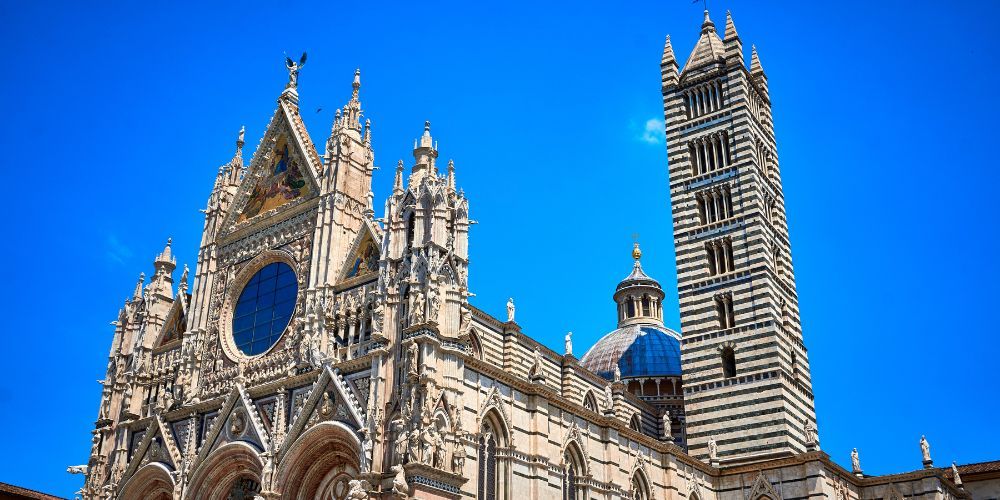
Ph Canva by Boris Gelman
The Cathedral of Siena complex is one of the most significant monuments of the European artistic scene, a testimony of the city history that contains masterpieces of the most important art masters , such as Donatello, Michelangelo, Bernini, Nicola and Giovanni Pisano. One of the most important works is the Majesty of Duccio di Buoninsegna, made for the high altar of the Cathedral and now kept in the Museum along with a great value artistic heritage.
The Cathedral, dedicated to the Assumption of Mary, is the heart of the complex and amazes for the beauty of its marble floor, the Gothic facade and the Piccolomini library. The Facciatone, built in 1339 with the ambitious project then abandoned to expand the Cathedral, offers a breathtaking view of the city and the surrounding hills. The Crypt, forgotten for 700 years until discovery in 1999, and the Baptistery, richly decorated with frescoes and marble works, complete the tour of the complex: but there is still much to discover in the historic center of the city.
Let yourself be led to Piazza del Campo, wonderful setting of the famous Palio of Siena, admire the Torre Mangia, the Palazzo Comunale and the majestic Basilica of San Domenico, in a path that will introduce you to the stories of the great Sienese noble families and the traditions that characterize the city.
Find out more9. A journey through the scents and flavours of Tuscan wines
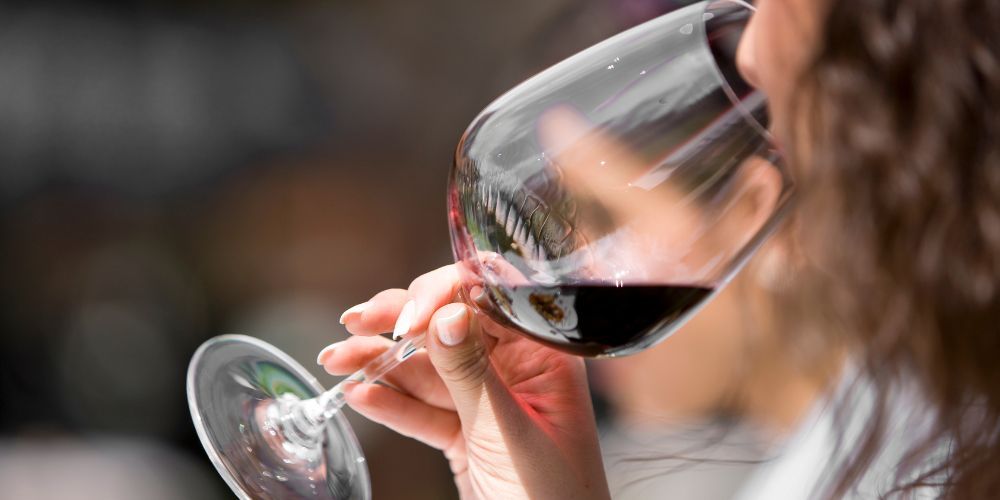
Ph Canva by Webphotographeer
Siena and Chianti are not only art and culture: this land can offer the best of food and wine products and the best way to end a day dedicated to artistic beauty is certainly a full immersion in the flavors and scents of local wines, with the guidance of an expert who will teach you to recognize the flavors, the aromas and aromatic notes that are released from a glass.
The Enoteca Sotto al Duomo, a treasure chest that holds ten thousand bottles of fine wines, is a journey into taste that starts from Tuscany and leads along the entire peninsula to the French vineyards.
You will have the unique opportunity to taste the best local wines accompanied by a selection of finger food in the beautiful setting of Piazza San Giovanni, right in front of the Cathedral of Siena.
Find out more8. History and culture of the Jewish community in the Ghetto of Siena
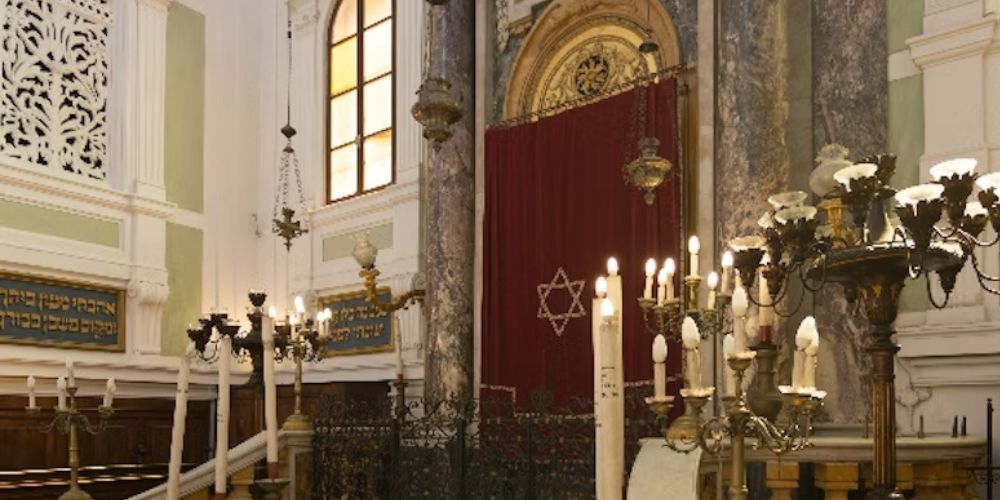
The Synagogue of Siena is located in the historic center of the city in Vicolo delle Scotte, not far from Piazza del Campo: here stood the Jewish Ghetto of Siena, established in 1571 and abolished in 1859, a real city within Siena in which the Jewish community lived their daily lives.
The Synagogue built in neoclassical style on a project by the architect Giuseppe Del Rosso dates back to 1786: the external facade is very simple and without decorations, a feature that does not reveal the presence of the temple, while the interior is richly decorated with stucco, candlesticks and silver objects.
Among the most valuable ritual artifacts preserved in the Synagogue is Elijah’s chair, inlaid with Hebrew verses and used for the circumcision ceremony. Here there is also a museum dedicated to the history of the Sienese Jewish community and the significant contribution made to the economic and cultural growth of the city.
Find out more7. A journey through Brunello: vineyards, wineries and traditions
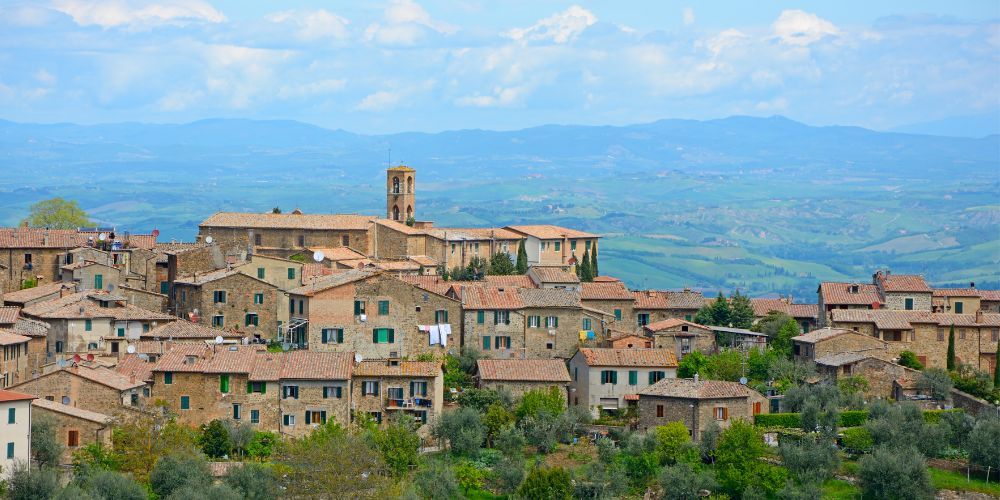
Ph Canva by Madzia71
Brunello di Montalcino is one of the most famous and appreciated wines in the world, a product of excellence of the wine tradition of the Tuscan hills. It comes from Sangiovese grapes grown on the hills around Montalcino, a charming medieval village set on a hill in the heart of the Val d'Orcia, in the homonymous natural park.
Discovering Montalcino means taking a journey through the history and tradition of these lands: UNESCO World Heritage Site since 2004, it is famous all over the world for Brunello, a real excellence in wine, the first wine in Italy to obtain the Denomination of Controlled and Guaranteed Origin.
Start from Siena and visit the village, the historic center with the fortress, the historic cellars of the territory, the vineyards. Here you can taste fine wines accompanied by local products, in the frame of an enchanting landscape.
Find out more6. Art, history and wine: a treasure trove of masterpieces in the Tuscan hills
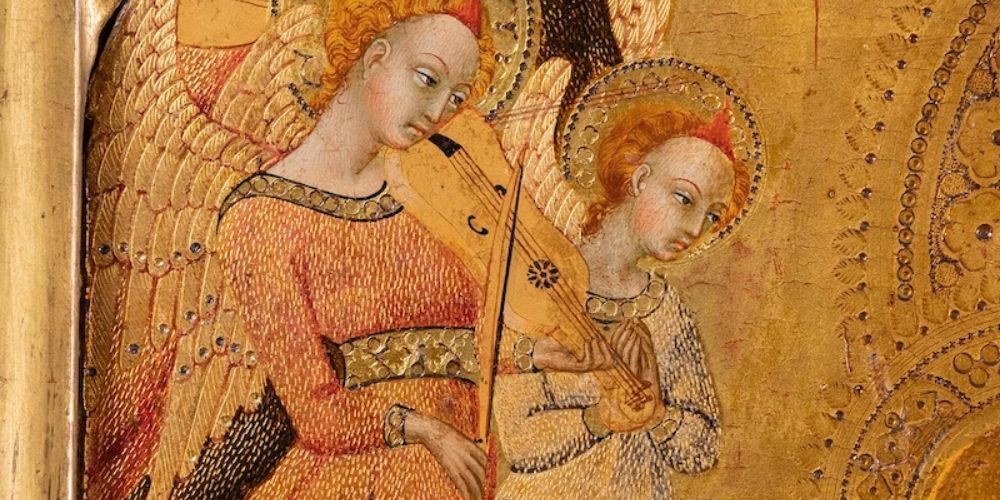
Montalcino is not only wine and excellent gastronomic products: the Civic and Diocesan Museum of Montalcino is a jewel that contains the precious artistic heritage of this ancient village.
The museum is located inside a former Augustinian convent and preserves masterpieces of great value, including paintings, sculptures, sacred furnishings and illuminated codes, which testify to the cultural and religious wealth of Montalcino from the twelfth to the eighteenth century.
Among the most important works are the polyptych of Bartolo di Fredi, Madonna and Child and Saints by Pietro Lorenzetti, the triptych by Duccio di Buoninsegna, Madonna and Child by Simone Martini and the wooden Crucifix attributed to Giovanni Pisano.
The archaeological section houses important archaeological finds of Etruscan origin and in 2021 the museum has been enriched with a new space dedicated to Brunello di Montalcino: the museum also offers a splendid panoramic view of the Val d'Orcia and the vineyards.
Find out more5. The palace of Pope Pius II: a jewel of the Renaissance in Pienza
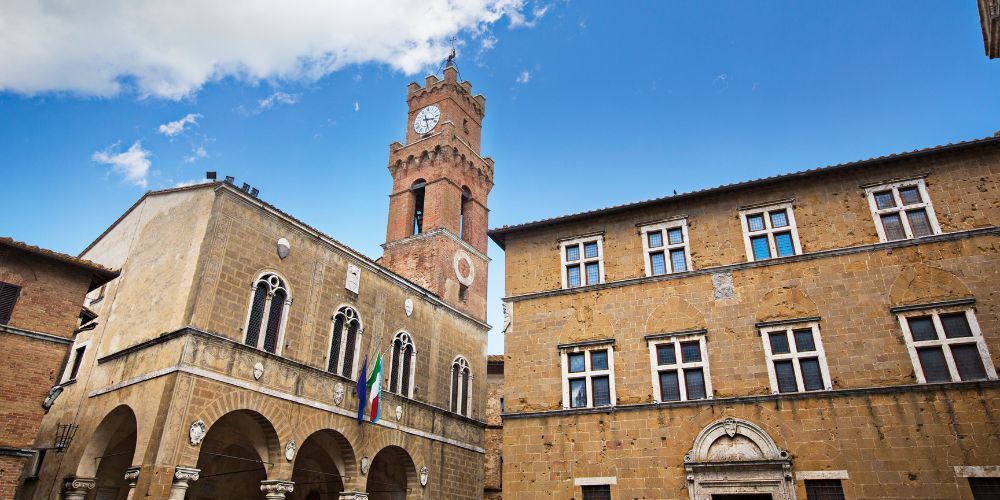
Ph Canva by Xavierarnau
Palazzo Piccolomini is one of the masterpieces of Renaissance architecture in Tuscany: it was commissioned by Pope Pius II to his architect Bernardo Rossellino in the second half of the 15th century.
The palace is located in the center of Pienza, the ideal village wanted by the pontiff, and overlooks a beautiful square with the Cathedral and Palazzo Comunale. The palace has a square plan, with two orders of windows and a monumental portal on the north facade.
Inside you can admire the courtyard with the loggia, a contemporary art gallery and the rooms decorated with frescoes and period furniture, including the Pope’s bedroom.
One of the most enchanting corners of the building is the roof garden: surrounded by ivy-covered walls and a three-storey loggia, it offers a breathtaking view of Mount Amiata and the Val d'Orcia with its vineyards.
Find out more4. San Gimignano: full immersion in art and history
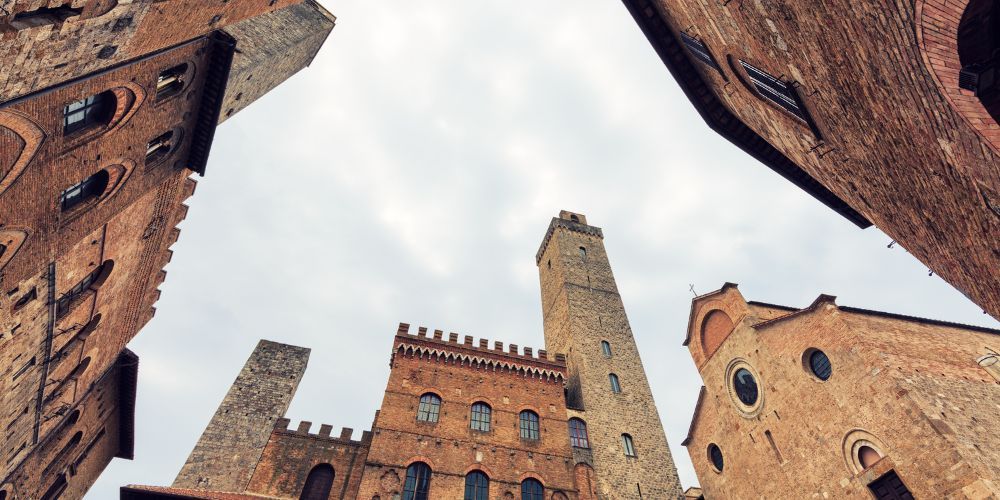
Ph Canva by Borchee
Around Siena and in the heart of the Chianti hills, San Gimignano will amaze you for its artistic wonders and the atmosphere of the past. If you have little time and do not want to miss any attraction of the "city of a hundred towers" you can buy the San Gimignano Pass, a two-day ticket that gives access to all the unmissable places of the village.
With the pass you can visit the Civic Museums and the art collections that are kept there, from painting to sculpture, from archaeology to the ancient pharmaceutical and herbal art. You can also climb the Torre Grossa, the highest in the city, and enjoy a breathtaking view of the surrounding hills.
The pass also includes a visit to the Collegiate Church of Santa Maria Assunta, the most important church of San Gimignano where you can admire the beautiful frescoes that tell the stories of the Bible and the Saints, and enter the Museum of Sacred Art that exhibits works of art belonging to the church and other parishes in the area.
Find out more3. The daily life of a bourgeois family of late 800
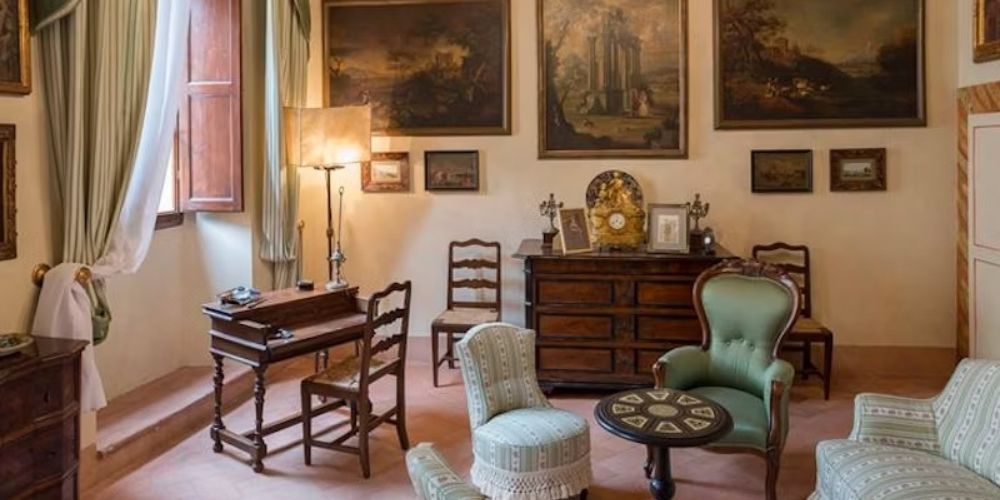
Visiting Casa Campatelli in San Gimignano is an experience that allows you a slice of everyday life of a bourgeois family at the end of the nineteenth century.
The house, dating from the twelfth century and later altered over time, was donated to the FAI (Fondo Ambiente Italiano, the National Trust for Italy) by Lydia Campatelli in 2005 and still preserves one of the 14 towers that survived to the present day: 28 meters high, allows you to admire from above a suggestive view of the surrounding hills and the ancient medieval village.
In the palace you can discover the rooms furnished with taste and refinement and the art collections of the Campatelli: the paintings of Guido Peyron, the ceramics of Montelupo and the memories of the family. A real journey into the past and the millennial history of San Gimignano, told with innovative digital technologies available to visitors.
Find out more2. Art, spirituality and mysticism in the atmosphere of an ancient Romanesque Abbey
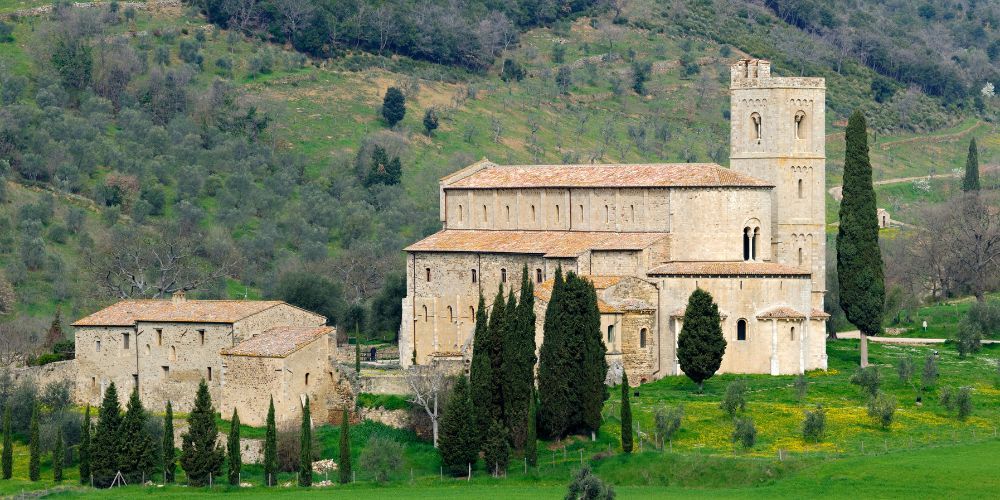
Ph Canva by AVTG
The Abbey of Sant'Antimo is one of the pearls of Tuscan Romanesque and is located in the town of Montalcino, in the province of Siena. Founded according to legend by Charlemagne in 781, the abbey was inhabited by Benedictine monks from the 12th century until 1462, when it was suppressed by Pope Pius II.
The abbey still retains its architectural and artistic beauty: the church with three naves, the bell tower, the cloister, the chapter house, the Carolingian crypt, the upper loggia, the monastic pharmacy, the herb garden of San Benedetto and much more.
Inside the church you can admire the choir, the apse, the ambulatory and the pulpit, as well as valuable works of art such as the wooden crucifix of the twelfth century and the ciborium of the thirteenth century.
The abbey is also a place of spirituality and prayer, where the monks celebrate daily the liturgy of the hours and Holy Mass with Gregorian chant: it can be visited with a ticket that also includes the museum and the garden.
Find out more1. Chianti cellars, among hills, castles and vineyards
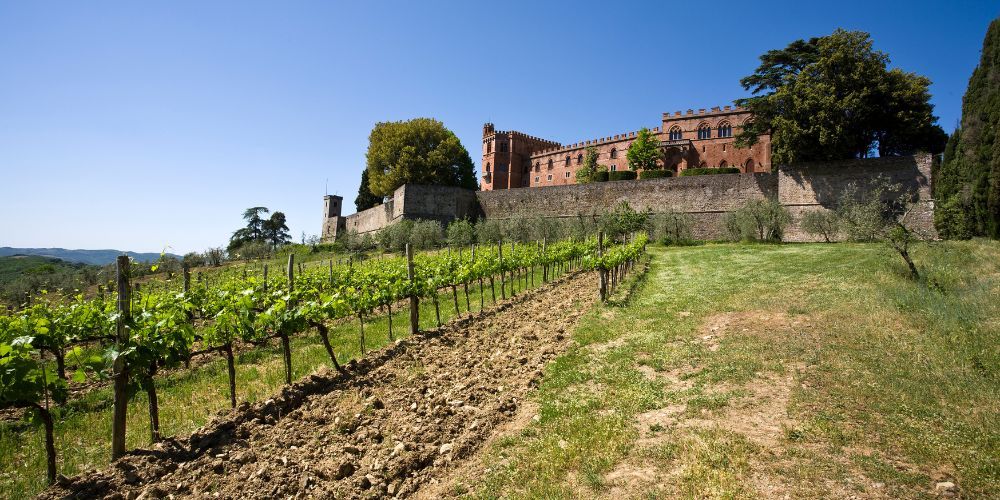
Ph Canva by Eyewave
If you want to discover the most authentic Tuscany you have to immerse in Chianti and its picturesque landscapes that seem to come out of an ancient painting: churches, medieval castles, small villages where the rhythm of life still seems to be that of the past.
On this tour you can visit two historic wineries and taste fine wines and typical products of the region. The Brolio Castle, one of the oldest and most prestigious historical residences in Tuscany and property of Ricasoli family since 1141, will open its cellar to let you taste the wine produced for generations in its vast estates.
Nestled in the hills, it is surrounded by a centuries-old park and a vast vineyard that produces the famous Chianti Classico wine, whose traditional formula was developed by Baron Bettino Ricasoli.
The castle is a testimony of very different eras and architectural styles: Middle Ages, Renaissance, Baroque, Neo-Gothic. It houses the Ricasoli Collection, composed of ancient paintings, furniture, weapons and documents of great value and is surrounded by a wonderful garden.
Find out moreAbout the author
Written on 18/01/2024

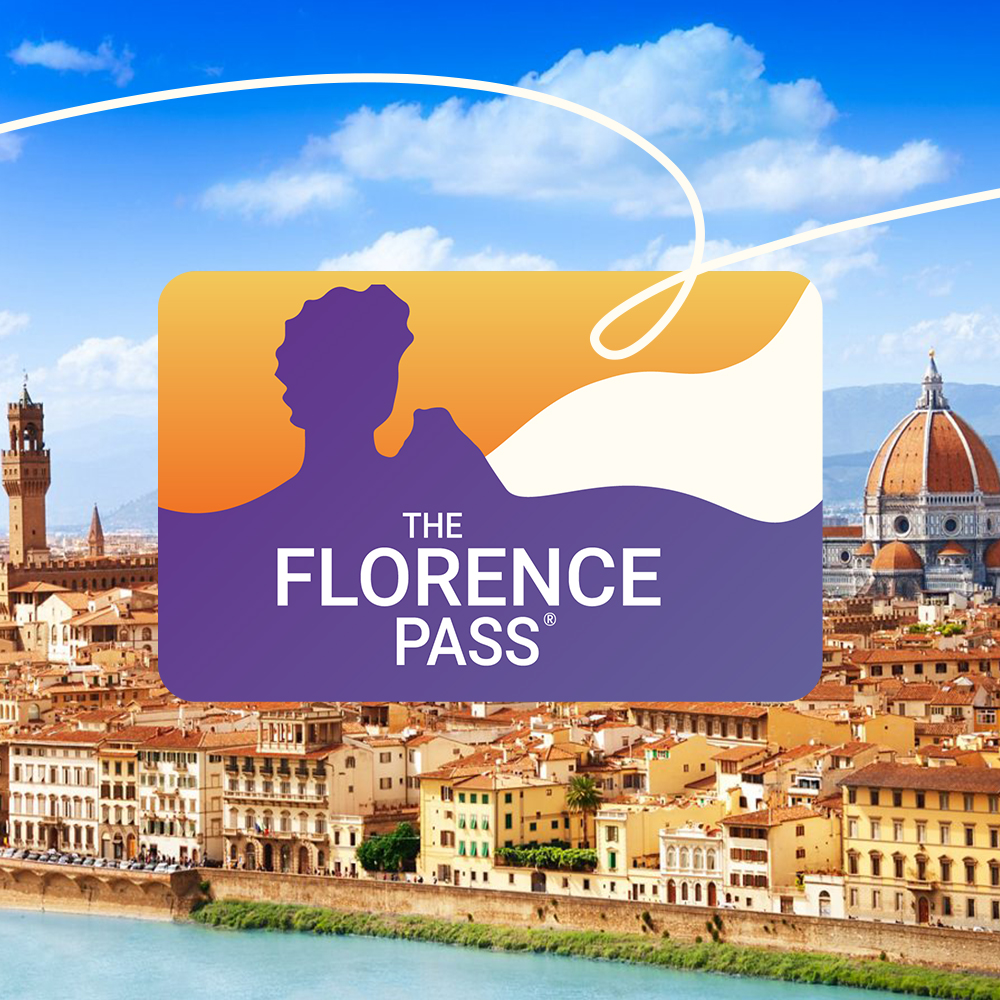
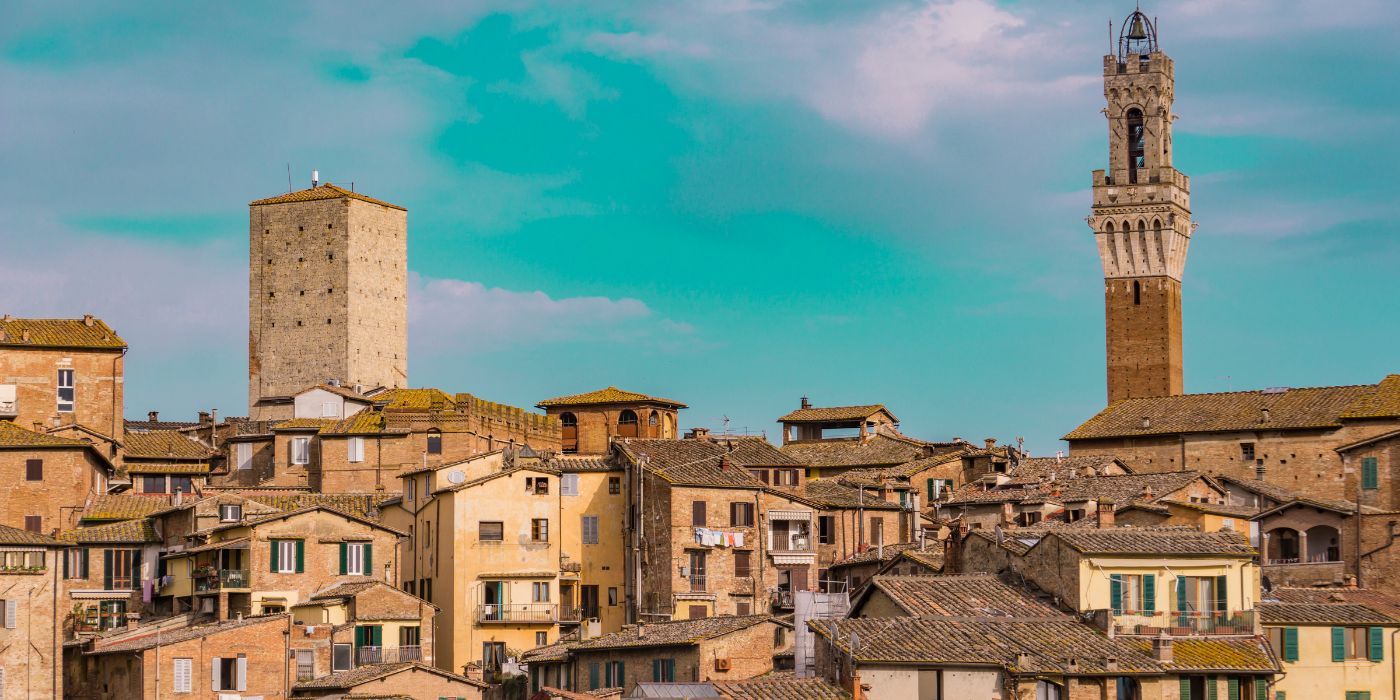

Sara Milanolo
What are the 10 things to do in Siena that you can’t miss in 2024? Go with us to the enchanting lands of Chianti.